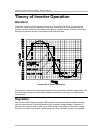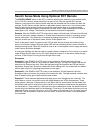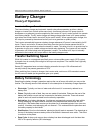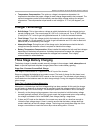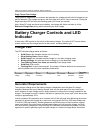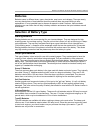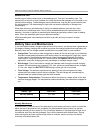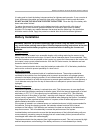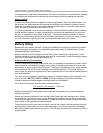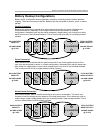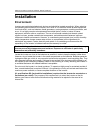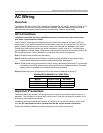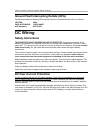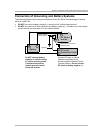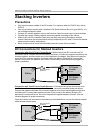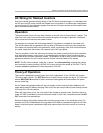
Xantrex RV Series Inverter/Charger Owner’s Manual
12
located generator. High battery temperatures will result in short battery life and should be avoided
by ventilating the enclosure and reducing the external heat sources by shading and insulation.
Battery Cabling
Connect the individual batteries together to make a larger battery “bank” with heavy cables. The
actual size of the cable depends upon whether the batteries are connected in parallel or series.
Generally, the cables should not be smaller than the inverter cables—if the main cables are 4/0
AWG, the battery interconnects should be 4/0 AWG.
It is usually preferable to first connect the batteries in series and then in parallel when connecting
smaller batteries together. The best configuration is to connect the batteries both in series and
parallel—a configuration often called “cross-tying.” This requires additional cables but reduces
imbalances in the battery and can improve the overall performance. Consult your battery supplier
for more information regarding the hook-up configuration required for your system.
Battery Sizing
Batteries are the inverter's fuel tank. The larger the batteries, the longer the inverter can operate
before recharging is necessary. An undersized battery bank results in reduced battery life and
disappointing system performance.
Batteries should not be discharged more than 50% of their capacity on a regular basis. Under
extreme conditions cycling to a discharge level of 80% is acceptable. Totally discharging a battery
may result in permanent damage and reduced life.
Estimating Battery Requirements
In order to determine the proper battery bank size, it is necessary to compute the number of amp
hours that will be used between charging cycles. When the required amp hours are known, size
the batteries at approximately twice this amount. Doubling the expected amp-hour usage ensures
that the batteries will not be overly discharged and extends battery life. To compute total amp-
hours usage, the amp-hour requirements of each appliance that is to be used are determined and
then added together.
You can compute your battery requirements using the nameplate rating of your appliances. The
critical formula is WATTS = VOLTS × AMPS. Divide the wattage of your load by the battery
voltage to determine the amperage the load will draw from the batteries.
If the AC current is known, then the battery amperage will be:
(AC current) × (AC voltage)
(battery voltage)
Multiply the amperage by the number of hours the load will operate and you have, reasonably
enough, amp hours.
Motors are normally marked with their running current rather than their starting current. Starting
current may be 3 to 6 times running current. Manufacturer literature may provide more accurate
information compared to the motor nameplate. If large motors will be started, increase the battery
size to allow for the high demand startups require.
Follow this procedure for each item you want to use with the inverter. Add the resulting amp-hour
requirements for each load to arrive at a total requirement. The minimum properly sized battery
bank will be approximately double this amount. This will allow the battery to be cycled only 50% on
a regular basis.
= DC amps



